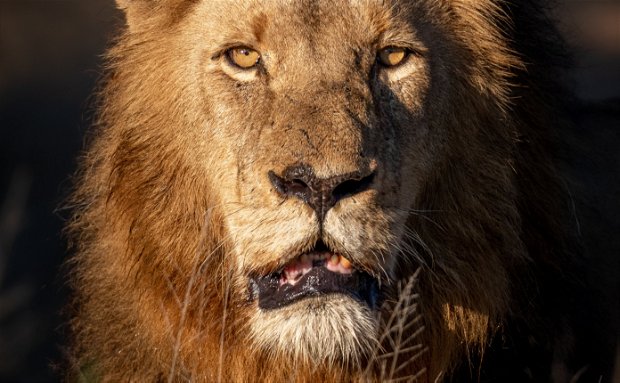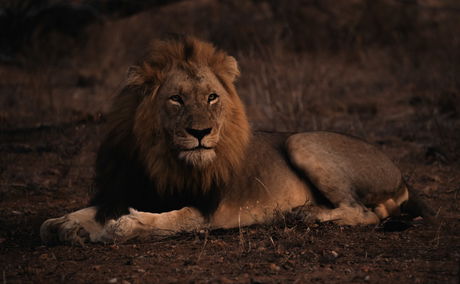Life for the prides of central Klaserie has been anything but simple. Power struggles, breakaways, and heartbreaking setbacks have dogged recent years. But with new males rising, cubs being born - and lost - and the lionesses fighting to protect their future, it’s a story as raw and real as the wilderness itself. Keep reading for the full update on the complex and ever-changing lion dynamics at Klaserie Drift.
Debunking common wildlife myths!

Did you know the cheetah is not actually the fastest animal on the planet? That accolade actually belongs to the Peregrine falcon, which can dive at speeds reaching a colossal 390km/h! Keep reading to uncover the truth behind more common myths and misconceptions about African wildlife.
1. Are hyenas are always scavengers?
Despite their undeserved reputation thanks to the likes of Disney’s ‘The Lion King’, hyenas are actually phenomenal hunters – usually having much greater success than their feline counterparts. However, they are also highly intelligent and curious animals and realise that it is often much easier to steal food than to hunt it for themselves. For this reason, in many areas, hyenas will scavenge from other predators as a primary food source and resort to hunting only when necessary. However, if there are too few predators to scavenge from, they are quick to adapt and hunt for their dinner – with some areas even noting that it is more common for lions to scavenge off hyenas rather than the other way around!

2. Do male lions hunt?
In actual fact, a male lion spends at least 2 to 3 years of his life without any female support whatsoever. As he comes into adulthood at around two years old, he is ejected from the pride and must fend for himself until he is large enough to claim a pride of his own. Then, once he has taken over a pride, he will spend large tracts of time away from them, defending his territory from other males. In both of these periods, it is a case of hunt or die.
Furthermore, even when with the females, the male lion does usually help in the hunt of larger prey. The problem comes with his large mane which makes him slightly more conspicuous. For this reason, as well as the fact that the females hunt together on an almost daily basis, it simply makes more sense for him to let them go ahead and lay their trap. Unfortunately, if the prey is small like an impala, he will likely steal the kill from the females, giving him his bad reputation. But, if the prey is large like a buffalo or giraffe, he will step in once the animal is cornered, using his massive strength and weight to help bring the animal down and suffocate it – a task that might not be achieved without his assistance.
All in all, male lions are not exactly the perfect gentlemen, but they certainly do hunt!
3. Can impalas can delay the birth of their offspring?
This is a widespread myth based largely on the fact that impalas seem to all birth at once – and usually after the arrival of the first rains. However, biology tells us that a foetus must leave its mother’s womb before it is too large to fit through the pelvic cavity. By delaying birth, an impala would risk her lamb growing too big, getting stuck and killing them both. In reality, impalas are synchronised breeders. At the same time each year, male impalas ramp up their displays to claim and mate with as many females as possible. Their constant snorting and chasing bring about oestrus in the females, meaning the likelihood of them conceiving – and birthing – together is extremely high.
The fact that the lambs are usually seen only after the first rain could be to do with the impalas simply being more in tune with the seasons than us or, more likely, any lambs that are born early are much less likely to survive. Either the mother abandons them due to the sparse landscape failing to provide her with enough nutrition to generate milk or predators quickly ensnare them as hiding places are few and far between.

4. Are hyenas are hermaphrodites?
If you’ve ever seen a female hyena (and knew she was, in fact, female) you might be surprised to see she has genitalia that closely resembles that of a male – extending up to eight inches long. However, the truth is this pseudo-genitalia does not actually function the same as a male. It is thought to occur as female hyenas are exposed to more testosterone in the womb and can have up to three times the hormone in their body than their male counterparts. One of the problems of this strange anatomy is that female hyenas must also give birth through this elongated opening – something that sadly causes up to 60% of cubs to suffocate before they are even born and can kill first-time mothers.
5. Are leopards are nocturnal?
Although, like lions, leopards naturally prefer to hunt in the cooler hours and under the cover of darkness, the truth is they are staunch opportunists and will become active at any time of day or night if the need arises. A better definition would be to define them as crepuscular – meaning they are most active around dawn and dusk (which is one of the reasons we like to be out on safari then!) but you stand almost as much chance of spotting a leopard during the day as at night – just ask some of our past guests that have seen them walking past the swimming pool in the middle of the day!

6. Do elephant graveyards exist?
Another myth perpetuated by Disney. This idea originates from the fact that certain areas can have more elephant bones than others. However, this would be easily explained by understanding that elephants do not go somewhere specific to die, but to live. As an elephant reaches old age, their last remaining teeth are ground down to almost nothing and they can no longer chew their food. In times of drought, where no soft or leafy vegetation is available, elephants must eat roots and bark to survive. With no teeth, this becomes an impossible task and so, in a last-ditch effort to survive, these old giants take themselves to a permanent water source to take advantage of the surrounding greenery, or simply fill their hollow bellies with water until death finally takes them.

7. Do predators really not eat waterbuck because they taste bad?
Waterbuck can actually taste pretty bad! If you’ve ever been close to one, you likely won’t forget the musty smell they give off in a hurry. This is from a thick oil that is secreted to help waterproof their fur because, as their name suggests, they spend much more time than most antelope in the water. However, lions and hyenas are not so fussy. Food is food and at Klaserie Drift we have seen all kinds of predators hunting and feeding on waterbuck without so much as a second thought.
8. Is it true that white rhinos are white and black rhinos are black?
All rhinos are grey! Strangely enough, we can’t be 100% sure where their odd nomenclature comes from, but it is thought to be a mistranslation from the Dutch word for ‘wide’. Another name for the white rhino is the ‘wide-mouthed rhino’ and, with white and wide both sounding very similar in Dutch (and English), a misunderstanding likely occurred and eventually stuck. The black rhino was then thought to be so-named to distinguish it from its larger cousin.
9. Do giraffes dislike putting their heads down as they get dizzy from a rush of blood?
Giraffes actually have a unique anatomy designed to cope with their incredible height – and this includes a network of capillaries in their heads that physically prevents them from getting a ‘rush of blood’ whenever they lower it. Instead, giraffes actually only spend a few seconds at a time drinking because they feel extremely vulnerable like this. Whilst standing upright, adult giraffes are a huge challenge for even a large pride of lions to bring down. But, the second they lower their heads, they become unbalanced and easy prey. Better to keep looking up for danger, then!

10. Can chameleons change colour to match their surroundings?
The main reasons chameleons actually change colour is due to the surrounding temperature and to communicate their mood. Whether they are hot, cold, completely relaxed, excited to mate, ready to fight or just want to signal their submission, a chameleon can change colour to ensure they are understood. However, the reason chameleons are largely green is so they can remain camouflaged in their leafy habitat – and they become almost impossible to see when they are so maybe there is a small element of truth in there somewhere!
Words and photos by Emily Whiting
Further Reading
With two cheeky youngsters and a tiny new arrival at the hyena den, life couldn't be better for this successful clan! Keep reading to dive into the world of these fascinating, misunderstood carnviores and discover why hyena mothers might just be the true superheroes of the bush...
Planning a winter safari in South Africa? You’re in for a treat! The winter months (May to August) are among the best times to visit the bush: dry conditions make for exceptional game viewing, temperatures are cooler, and the golden light is a dream for photographers. But what should you pack to make the most of your winter safari? We’ve outlined some of our top tips below.








Share This Post